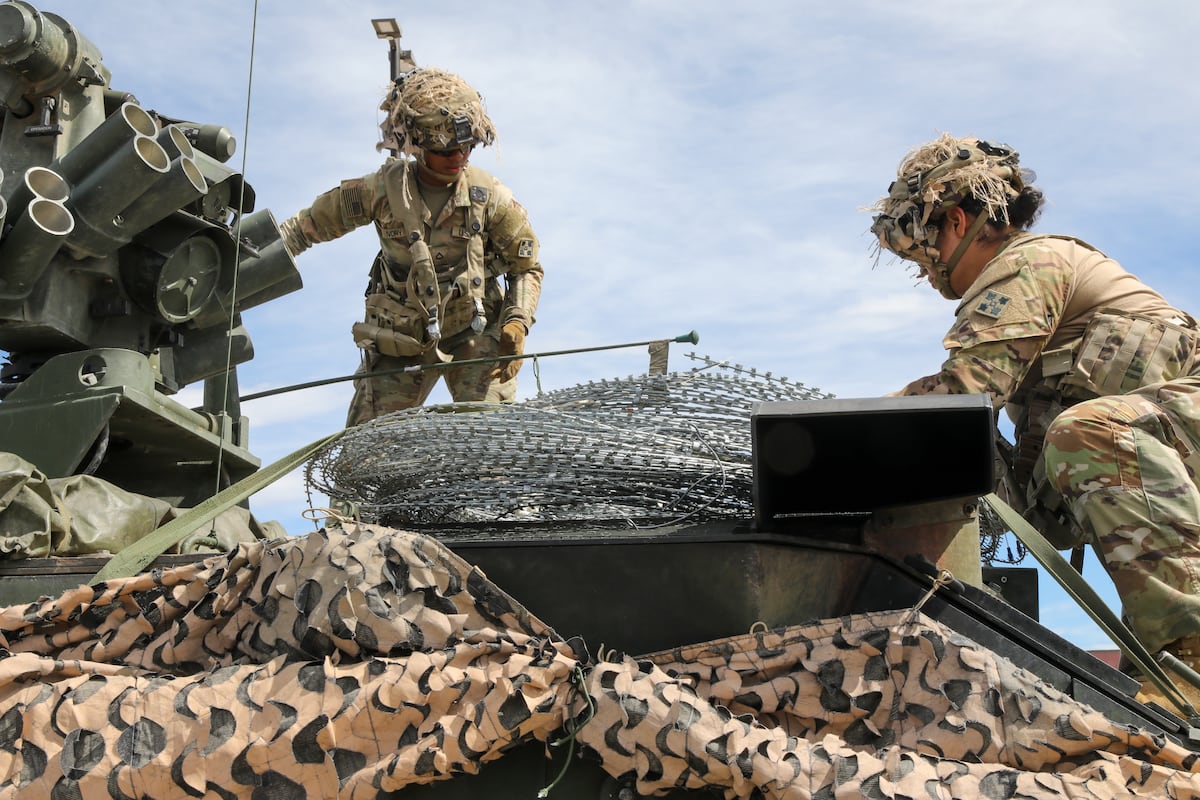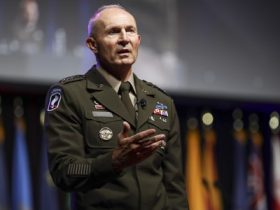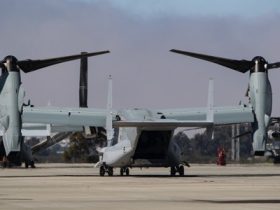The U.S. Army will ramp up its efforts to transform its formations with next-level technology including capabilities to counter drone threats much faster, Army Chief of Staff Gen. Randy George said at the Association of the U.S. Army’s annual conference Tuesday.
“We have to buy smart and fast,” George said in a speech at the annual Eisenhower luncheon. “Our budget is tight, our numbers are lean and that requires us to prioritize and make informed investments.”
When George became Army chief a year ago, he announced he would focus on using units in the field to transform the service “in contact,” putting capability into the hands of soldiers in realistic operational environments to advance things that work and scrap what doesn’t.
George said there are four major areas where “we will step on the gas” to continue the momentum established over the past year through a collection of initiatives to move faster, from working to obtain more flexible funding for specific capabilities to getting equipment into soldiers’ hands rapidly.
“First, our formations are going to dramatically improve their ability to counter enemy uncrewed systems,” George said. But this means ensuring a close alignment with the service’s effort to fix its current network and command-and-control capabilities.
RELATED
“We have to give every formation the right systems to sense, seek, and defeat enemy UAS to enhance their protection and security,” George said.
The second area will focus on scaling the transforming in contact initiative to include using two Armored Brigade Combat Teams, two Stryker BCTs and additional Guard and Reserves formations for additional transformation in contact experimentation.
“At the end of [fiscal 20]25, every warfighting function – including protection and sustainment – will be part of our transformation efforts,” George said. “The technologies we will infuse in our formations are not years away – they are available now.”
The Army will also “double-down” on operational transformation, George said.
“This means expanding the range and improving the accuracy of long-range precision fires. We will continue to demonstrate the lethality and impact of land-based fires on all domains of combat,” he said.
Multi-domain task forces, which bring long-range precision fires capability, will be integrated into operational-level commands, according to George.
“Intelligence will play a critical role in this transformation – both in guiding our warfighting concept and in protecting our soldiers from fort to port to foxhole, securing our installations, and defending our modernization and research institutions from exploitation by our adversaries,” he said.
Lastly, the Army will continue to modernize and strengthen its industrial base.
“Enhanced production capacity with the corresponding concentration of stockpiles at the most likely points of need to ensure the delivery of ready combat formations,” George said. “We can buy the best weapons in the world, but they will be useless to us if we can’t scale the production of the ammunition we need for today’s battlefield.”
Already the Army is working to shore up its industrial base, moving away from single sources, upgrading old infrastructure and growing its magazine depth after sending millions of rounds to Ukraine.
The Army has gone from producing 14,000 155mm rounds to nearly 50,000 a month. The service is aiming to expand capacity to 100,000 rounds.
“But improving 155 rounds is not enough,” George said. “We must invest across all of our critical munitions inventories.”
America’s adversaries are working together more so than ever, he warned.
“Russia, China, Iran, and North Korea represent an ‘Axis of Upheaval’ that is increasingly collaborating and conspiring to undermine democratic values and drive a wedge between us and our allies and partners,” George said. “Everything we do is about building lethality and cohesive teams, and given our current operating environment, we have to do it as fast as we can.”
Jen Judson is an award-winning journalist covering land warfare for Defense News. She has also worked for Politico and Inside Defense. She holds a Master of Science degree in journalism from Boston University and a Bachelor of Arts degree from Kenyon College.
Read the full article here








Leave a Reply